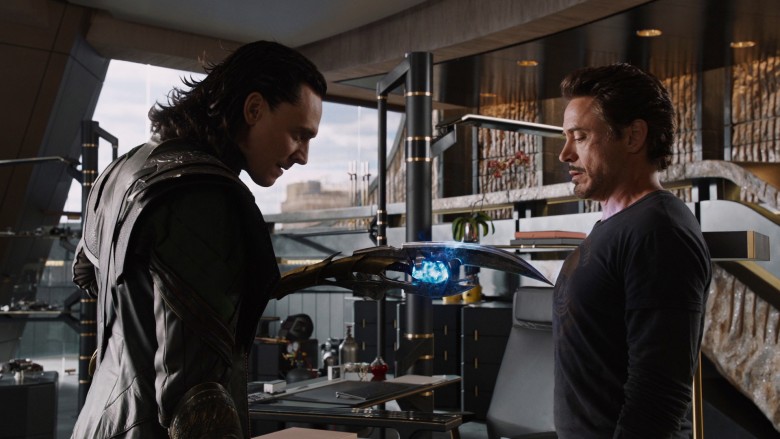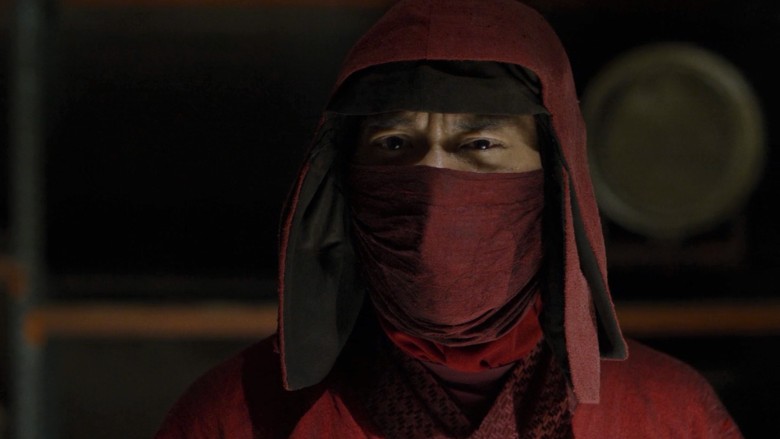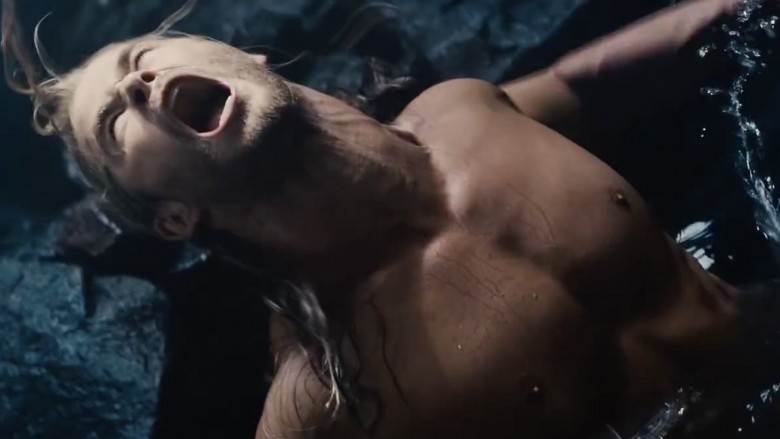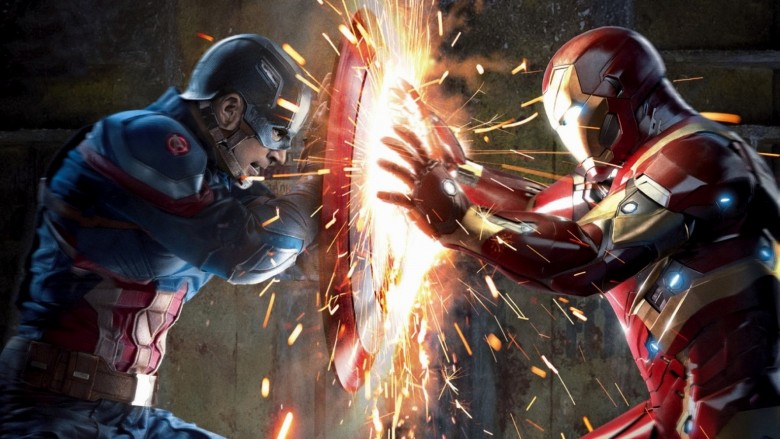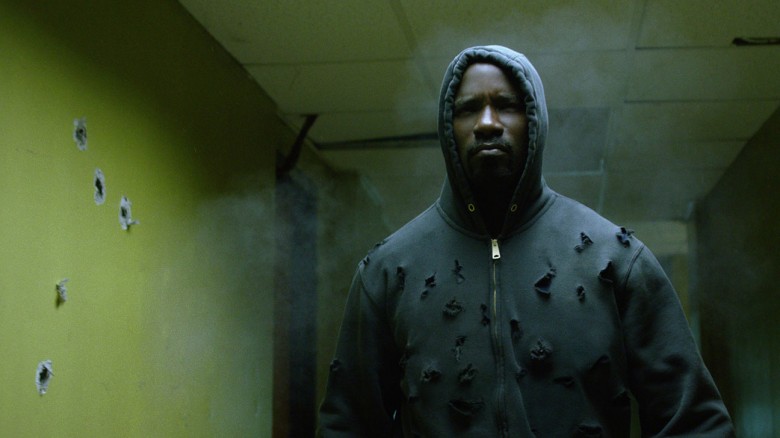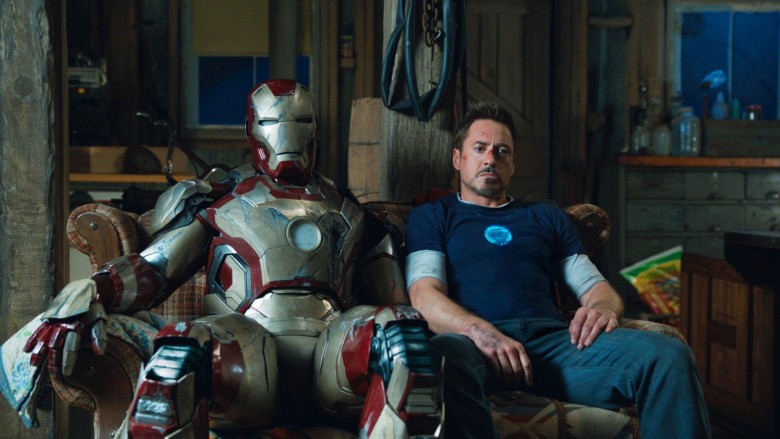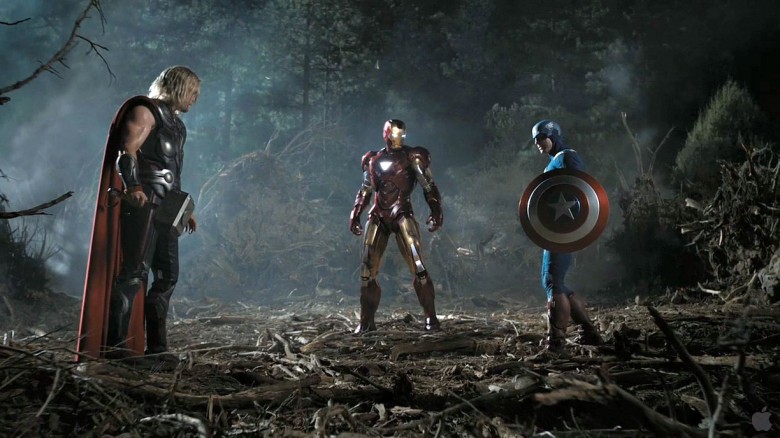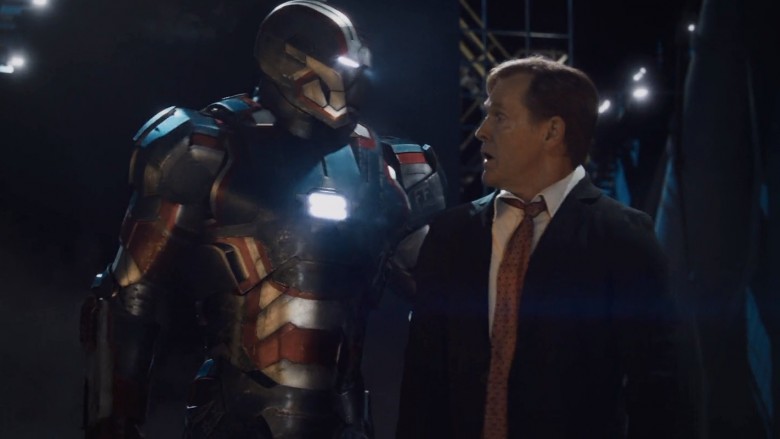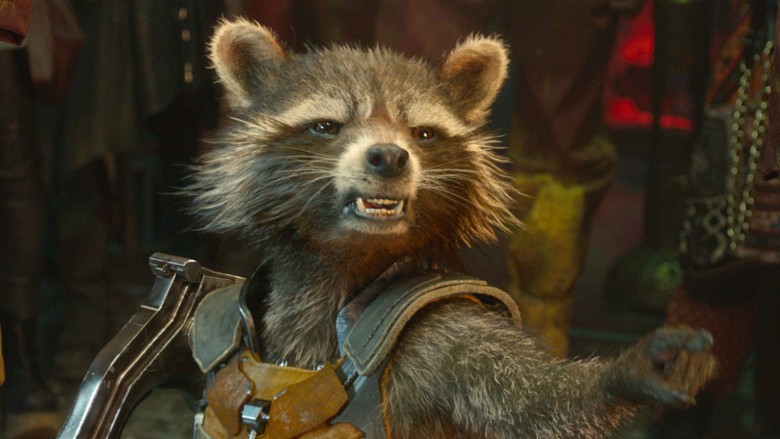Marvel Plot Holes That Aren't Really Plot Holes
Love or hate it, you have to admit the Marvel Cinematic Universe is pretty darn impressive. It was a bold move to link an ever-increasing number of movies to the same universe, and it was bolder still to expand that universe into television. Along the way, though, some plot holes are inevitable, and fans are always eager to point out everything from a minor inconsistency to a gaping impossibility. However, Marvel is sneakier than many people give them credit for, and most of these alleged plot holes have explanations that are nested deep within that sprawling, cinematic universe. Fortunately, you don't have to get your hands on an Infinity Stone to find all of these answers to your questions...just read this handy guide to Marvel plot holes that aren't really plot holes!
Loki's staff vs. Iron Man
A major part of Loki's plan in the first Avengers movie revolved around mind control. His ability to contain major characters like Dr. Eric Selvig and Hawkeye meant he was able to quickly amass a small army of zombified minions to help him bring the Chitauri to Earth. However, when he tries to control Iron Man, he is unable to get inside Tony Stark's head. The movie implies this is because of Tony's arc reactor, but later movies confirm that Loki's staff is powered by one of the Infinity Stones, the Mind Gem. Because it has the ability to manipulate minds indirectly (such as the scene in Avengers where its sheer presence seems to make the team bicker and fight), some people think it's a plot hole that the gem would not affect Tony Stark.
However, this isn't a plot hole, although the exact explanation is a bit weird, even by the standards of the Marvel Cinematic Universe. Tony actually is protected by his arc reactor, though it is not because of something as straightforward as having metal where his heart should be. At this point, Tony's arc reactor has been upgraded by the research he uncovered from Howard Stark back in Iron Man 2. As we found out in Captain America: The First Avenger, Howard actually had years to study the Tesseract cube recovered from Red Skull, which in turn helped Tony create a brand new element using Howard's recorded advice. In short, Tony's arc reactor has some of the same Infinity Stone energy coursing through it as the cosmic cube, rendering Tony less susceptible to mind control. Throw in the fact that in the comics, the Mind Gem's powers can be broken by a sufficiently strong will, and it's clear that the iron-willed Tony Stark would've had a decent chance of beating Loki's brainwashing stick.
Daredevil vs. the darkness
While audiences watch superheroes accomplish great feats on a regular basis, it was Daredevil that managed to do the impossible by delivering a second season of his hit Netflix show that lived up to the quality and intensity of the first one. It brought back the old fan-favorite character Stick and introduced new fan-favorite Elektra, and in grand comic fashion, everybody fought a band of mystical ninjas known as the Hand. Normally, these action scenes came off as relatively realistic, but some fans were left a bit baffled by episode 12. Here, the Hand manages to escape Daredevil and his allies after the lights briefly turn off and then come back on. It's a classic movie trope to have such characters disappear into darkness, but considering that Daredevil is blind and doesn't see with his eyes, many fans thought this was a plot hole bigger than the giant hole Daredevil finds in the middle of New York City.
However, there's really a straightforward explanation to the ninja trick. The show had established that members of the Hand have the ability to slow their heartbeats and lower their body temperatures in order to mask themselves from Daredevil's super-senses. Thus, turning out the lights was merely a way to escape from the more mundane eyesight of Elektra. Sure, this might've seemed pretty silly at the time, but after examining the evidence, the scene makes a whole lot more sense in retrospect. Now, if we could only figure out what that actual hole is all all about...
The disappearing, re-appearing Thor
For better or for worse, Avengers: Age of Ultron is a movie jam-packed with characters and events. The film introduced us to the Maximoff twins, Quicksilver and Scarlet Witch, plus we got to witness the surprise revelation of Hawkeye's family. Somewhere along the way, though, we lost some of the motivation for our favorite characters. For instance, while visiting Hawkeye's hidden home, Thor suddenly decides he has to fly off and do some god stuff. This results in an awkward scene that unsuccessfully sets up Thor: Ragnarok, but it does successfully show off Chris Hemsworth's muscles. But after that, we don't really see Thor again until he dramatically crashes inside Stark Tower to bring the Vision to life. Because Thor seemingly had no way of knowing how to bring Paul Bettany's body to life or even where his friends were, many people think this is a plot hole hiding in plain sight in the middle of the movie.
Of course, Thor's weird story isn't a plot hole, but the full rundown of what happened might have a runtime that rivals Age of Ultron itself. The short answer is that Thor consulted the Norns, beings similar to the Fates, who conveniently give him advice while he takes his mid-film bath. So why don't we see any of this? Well, that's because Joss Whedon's first cut of the film would've fit right in with Middle-earth, as Age of Ultron was originally over three hours long. As you might expect, Marvel executives wanted some judicious cuts, and after audiences reacted poorly to different versions of the Norn cave scene, Marvel turned the sequence into the fragmented mess that we've got now.
But why not just get rid of it altogether? According to Whedon, Marvel insisted on having this cave scene (hey, Ragnarok isn't going to set itself up), and they threatened to take out the awesome scenes at the farm if Whedon didn't include the Norn segment. So audiences ended up with a scene that just created a whole lot of confusion instead of providing any answers. But there's also a shirtless Chris Hemsworth, which probably made the whole thing easier to watch for quite a few audience members.
The Cap who knew too much
Captain America: Civil War is a movie that definitely gives the audiences what they want. Even though the film is famous for the airport battle in which all of the heroes slug it out, Marvel knew that, as with Batman v Superman, audiences were mostly here for the title bout between our two heavyweight heroes. So the end of the movie involves a knock-down, drag-out fight between Iron Man and Captain America. But what prompts the showdown? Well, Iron Man's rage is fueled by the revelation that Captain America seemingly knew about Bucky, as the Winter Soldier, killing Tony Stark's parents. For plenty of the people in the audience, this was a plot hole, as we never see Captain America uncovering this explosive information.
The truth is that Captain America has had ample time to put this information together. One of his biggest clues was back in Captain America: The Winter Soldier. In an old Army base, he discovers that Red Skull's mad science buddy, Arnim Zola, was inexplicably still alive as a computer program. Trying to distract Captain America long enough for an incoming missile to kill our heroes, Zola is happy to spill the beans about Hydra infiltrating S.H.I.E.L.D. and changing the course of history in their favor. During his monologue, we see scans of old newspapers flashing across the screen, one of which mentions that Tony's parents were killed in a car accident, strongly implying that Hydra had them murdered.
Considering that Zola turned Bucky into an unstoppable assassin, the Winter Soldier-Stark connection becomes pretty clear. But if you're still not convinced, remember that Captain America receives a detailed dossier about the Winter Soldier near the end of the movie, which should've helped eliminate any doubts about all of the horrible things Bucky did against his will.
Luke Cage and the fear of jail
One of the defining characteristics of Luke Cage in his titular Netflix series is his fear of going to jail. The man even goes so far as to work under the table or bow to Cottonmouth's pressure when he thinks there's a risk of ending up behind bars. As the series goes on, however, this frequent plot point seems like a frequent plot hole. We see that Luke Cage is bulletproof and super strong, and it seems like no prison could actually contain our hero. Why, then, is he so frightened of going to the big house?
Luke's fear of jail is actually rooted in several real concerns. At this point, he has likely seen S.H.I.E.L.D. technology used to fight off the Hulk (remember, the battle with Hulk at Culver University was televised, as seen briefly in Iron Man 2), so he may worry about S.H.I.E.L.D. getting involved. He's also escaped from Seagate prison, a place that experiments on prisoners and also contains "millionaires hidden in dungeons," such as the Mandarin and Justin Hammer. In other words, it makes perfect sense that Seagate would be able to contain a super-powered person, and Luke may also worry about the potential for prison scientists to either take away his power or exploit him.
Finally, Jessica Jones showed us that despite his unbreakable skin, the sheer force of things like shotgun blasts can give Luke Cage head trauma, and if that happens, no one except Claire Temple knows how to operate on him. All in all, a full-on clash with authorities could easily result in Luke becoming dead, de-powered, or a drone of corrupt officials, which is why it makes perfect sense that he would choose to fly so far under the radar.
Iron Man and hard-to-charge batteries
It's safe to say that Iron Man 3 was a divisive movie. On one hand, it reunited Robert Downey Jr. and director Shane Black after the duo had made magic together in the sleeper hit Kiss Kiss Bang Bang. On the other hand, the movie introduced major comic book baddie the Mandarin as a drugged-out actor, which angered fans even more than the movie's prolonged visit to a small town in Tennessee. Speaking of that little city, Iron Man wound up in Tennessee after his suit went into autopilot mode when Tony blacked out. Unfortunately, the suit ran out of power, forcing him to use unconventional ways of recharging its batteries. For longtime Iron Man fans, this seemed like a plot hole, as the first two Iron Man movies revolved around Tony's suit being powered by the same arc reactor that keeps him alive.
This is another seeming plot hole that has a simple explanation. In fact, the explanation on this one is hidden in plain sight throughout the movie. In Iron Man 3, Tony has begun working with suits that are self-powered, which is part of what allows him to control them remotely. This is how he saves the survivors of Air Force One from the safety of a boat (heroic), and it's also how he greets Pepper while he's really downstairs (creepy). And of course, the explosive final battle involves Tony summoning all of his suits to help him fight. But while having a bunch of self-powered suits can come in handy, there is one big downside. Now his armor can run out of power. However, the pros definitely outweigh the cons, especially since the new upgrades allow Tony to finally toss away his arc reactor.
Iron Man and easy-to-charge batteries
For better or for worse, The Avengers helped introduce the live-action version of a comic book staple: heroes fighting each other when they first meet. For example, fists start flying when Iron Man struggles with Thor, and the fight doesn't end until Captain America manages to intervene. During the battle, Thor, god of lightning, channels some of his elemental energy at Iron Man. But instead of being defeated, Iron Man manages to absorb that lightning into his armor and temporarily becomes very powerful. Considering that audiences had previously seen Iron Man struggle with Whiplash's electric weapons in Iron Man 2, many assumed Joss Whedon hadn't done enough homework before penning his Avengers script.
However, it's important to note that Whiplash's whips are powered by an arc reactor of his own design, rather than conventional electricity. So it actually makes a lot of sense that his whips would've injured Iron Man when Thor's lightning couldn't get the job done. Plus, in the first Iron Man, Tony tested out his suit by flying as high as he possibly could, so chances are good he's insulated himself from the elements to mitigate the danger of regular lightning bolts. Finally, we know that Tony Stark compulsively creates newer and better versions of his Iron Man armor. Therefore, even if he previously did have any particular weakness to electricity, he would've upgraded his suit to help him fight bigger and better enemies, especially after nearly getting flogged to death by a set of electrified whips.
The lack of Cap
In Iron Man 3, the president of the United States finds himself in a tricky situation when he's threatened by the Mandarin. At one point, Iron Patriot (whose armor has secretly been taken over by one of Aldrich Killian's goons) shows up to help guard the commander-in-chief, but fans thought it was really odd that Captain America wasn't sent to protect the president instead.
However, there are many reasons that Captain America wouldn't get the call. For instance, Iron Man offers to help Rhodey and the military hunt the Mandarin early on, and Rhodey clarifies that this is "American business" as opposed to "superhero business." The presence of Captain America, being clearly associated with the Avengers, may give people the impression that the military can't handle the matter themselves. Second, we see in Captain America: The Winter Soldier that Steve Rogers is usually off doing clandestine missions, so he may very well have been busy.
Finally, Captain America lives in New York, and the president was threatened and kidnapped from a plane leaving Miami in very short order. Even if they did call Cap to be a bodyguard or to save the president after he was abducted, he probably wouldn't have gotten there in time. Iron Patriot, on the other hand, is a one-man army that can fly, shoot missiles, and looks like a mechanized American flag. In other words, he's the perfect body guard, unless his armor is hijacked, that is.
Rocket and Pollock
A large part of the humor in Guardians of the Galaxy comes from the fact that Rocket Raccoon doesn't fully understand the language and culture of other people. He doesn't know what "raccoon" means, for instance, and he refers to vocabulary as "vocabulistics." While these moments are played for laughs, they seemingly clash with another humorous moment. When Gamora comments that Star-Lord's ship is filthy, Peter Quill mentions how if they were to examine the area with a blacklight, the ship "would look like a Jackson Pollock painting." To this amazing one-liner, Rocket replies, "You got issues, Quill." For some audiences, this snapped them out of their suspended disbelief. How does Rocket Raccoon get the reference? Seriously, how does he know about Jackson Pollock?
However, the answer is surprisingly simple. Rocket, like many spacefaring creatures who interact with a variety of lifeforms, relies a lot on context clues in order to understand what people are talking about. While he doesn't know what a "raccoon" is, for instance, he can intuit that people like Drax think of him as "some stupid thing." Additionally, Rocket is very tech-savvy, often turning random junk into frightening weapons like he's some sort of psychotic, furry McGuyver. Thus, while he probably has no idea who Jackson Pollock is, he's likely to know how a blacklight works. In other words, Rocket doesn't need to be an expert on 20th-century abstract Earth art to understand Star-Lord's joke, and his reaction is absolutely priceless.

